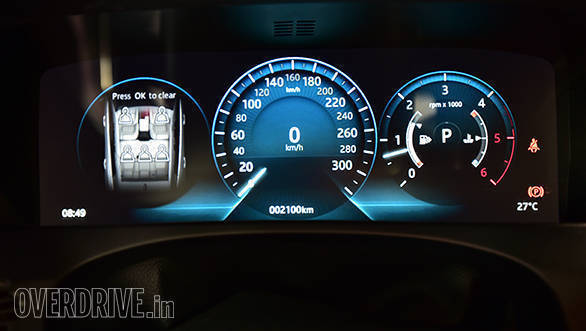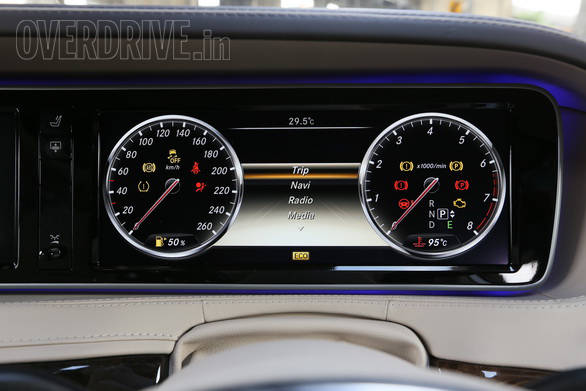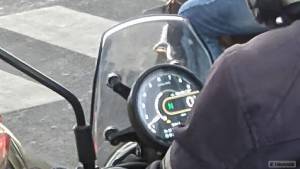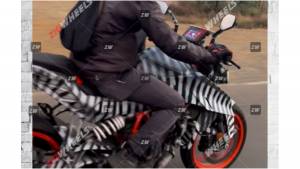Simple Tech: Instrumentation
Machines cannot speak our language. But all relationships, including man-machine, depend on language. So if you cannot understand what your engine is saying, it becomes harder to extract useful work without damage from it. For example, the aural galaxy hidden in a Ferrari or Lamborghini is well known. But it doesn't always mean that the car wants to flaunt it. That is usually just us. Perhaps the engine is overheating at the time and just wants you to back off. Perhaps the reason why supercar fires seem to be such a meme is because no one is listening to them.

Cars and motorcycles do communicate with us. And not via Ouija boards or hand-written letters. This department of engineering is called instrumentation. You see its results in the meters; you see in front of you. These meters convert that is going on into representations we can grasp, interpret and react to if needed. This information includes vehicle speed, engine speed, temperatures, lubricant pressure and so on. Plus all the various lights and in today's car readouts with information and warnings. Behind the meters lies a very complex system made up of wires, sensors, microprocessors and electronics.
 Mini
Mini
Let's start with the speedometer. The speedo takes it readings from the rotation of either the transmission shaft or as is more common now with ABS-equipped vehicles, the wheel rotation itself. The rotation is converted into speed by simple mathematics. If the sensor is on the shaft then the circumference value of the tyre is used as a constant (which is why you need to re-calibrate speedos on older vehicles if you use a non-standard tyre size). The converted value, in kilometres or miles per hour, is displayed on the speedometer. The tachometer is exactly the same thing. It reads the transmission shaft's rotation and uses it to display the engine's speed in rotations per minute.
Both the meters are, in effect, an electricity generator, a very compact one. Early speedos were, in fact, called eddy current generators. The drive cable has a tube of tightly wound helical springs wrapped around a central wire that can rotate, called the mandrel. The basic commuters still use this set-up.
The helical spring allows bending without damage, and the mandrel connects the transmission/wheel via a gear to a permanent magnet inside the speedo housing. The mandrel's rotation causes the magnet to rotate inside a metal cup called the speedcup. This rotation causes stray or eddy currents to be generated, and an indicator needle moves in response across a marked face to tell you the speed. A stopper spring returns the needle to zero when you stop and also prevents it from going off the face of the dial at the other end.
Newer speedometers are electronic. They use an unmoving magnetic coil sensor placed very close to a rotating toothed disc - like the ABS-slotted ring on the disc carrier. The wheel or transmission's rotation causes a rise and dip in the magnetic field as the teeth on the disc pass the magnetic sensor. These disturbances are counted and sent to a chip that converts them into an analogue or digital signal that is shown to you.
All the other gauges, fundamentally, use similar mechanisms to convert a physical or mechanical quantity into displayable information. For example, fuel gauge uses variable resistor or capacitor instead of the speedo's magnetic sensor.
 Jaguar
Jaguar
Today we are moving towards the glass cockpit, as the aviation guys call it, where screens and digital displays replace dials and gauges. The screen permits more information to be shown. Information can be represented more creatively for clarity or ease of use. And increasingly, these screens are sensitive to touch which eliminates buttons and toggles.
The flip side is obvious. You do need to take your eyes off the road to read this information and that is a problem. Also a problem is touchscreens because you need to look at them to guide your finger, whereas a physical button can be found by muscle memory or feel without the eyes being needed.
 Mercedes
Mercedes
The current solution to the eyes off the road problem is the head-up display, already fairly common in high-end cars and many high-performance aircraft. These use either a clear display sandwiched in glass or projected information on a piece of inclined glass (like the windshield) to place important information, like speed and navigation instructions, in your line of sight. This allows the driver to simply shift focus rather than the eyes to gather the information as needed. The display is obviously designed to not block out the road ahead.
Starts Rs 69.9 Lakhs
1999cc
Automatic
204
430
-NA-
Starts Rs 1.57 Crore
2925cc
Automatic
290
600
-NA-
Starts Rs 38 Lakhs
1998cc
Automatic
231
320
15.81 Kmpl














